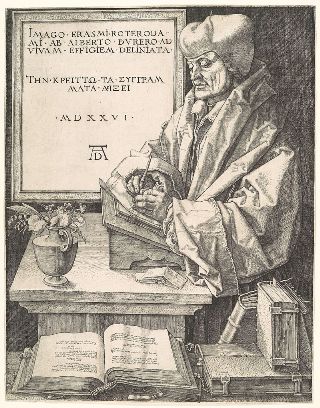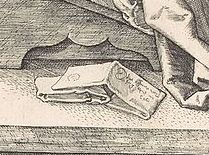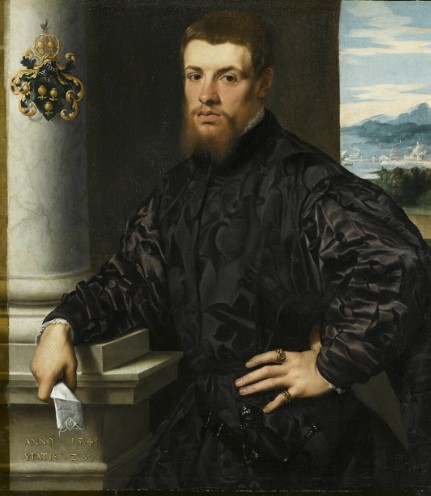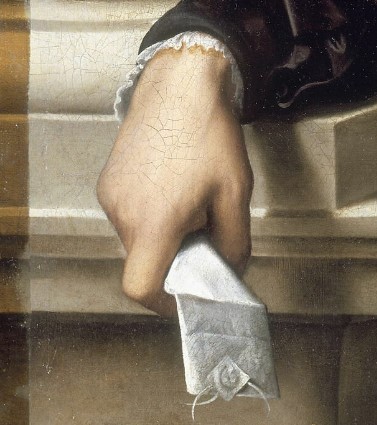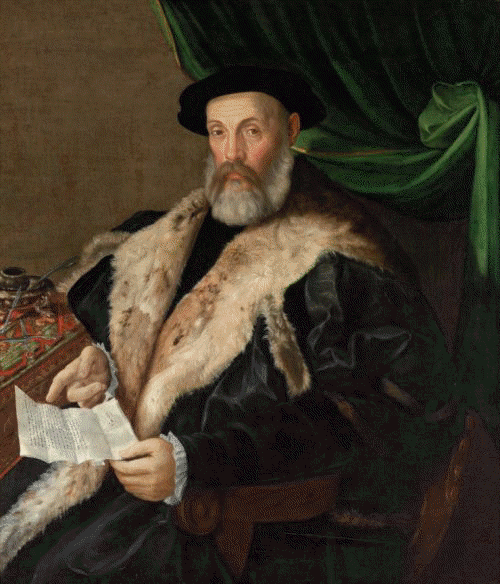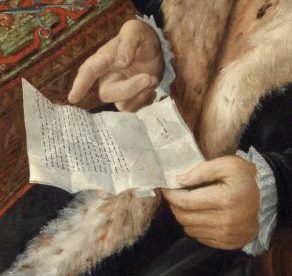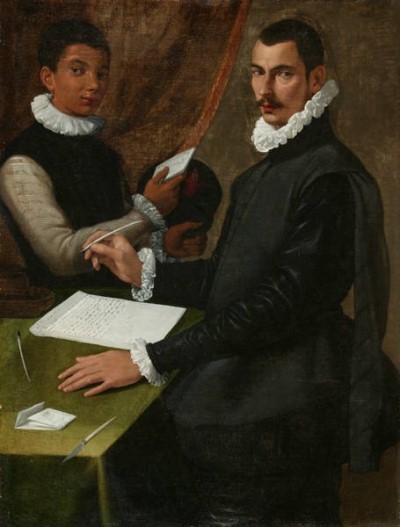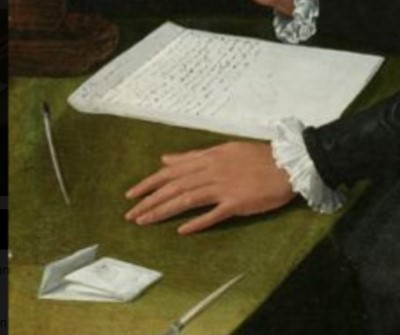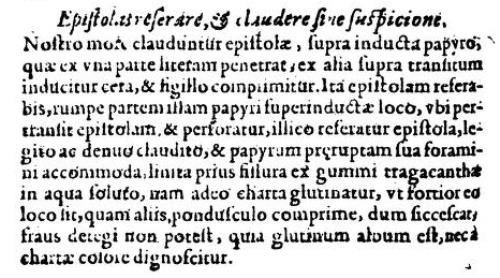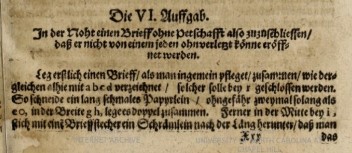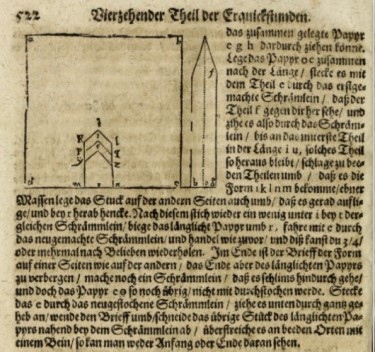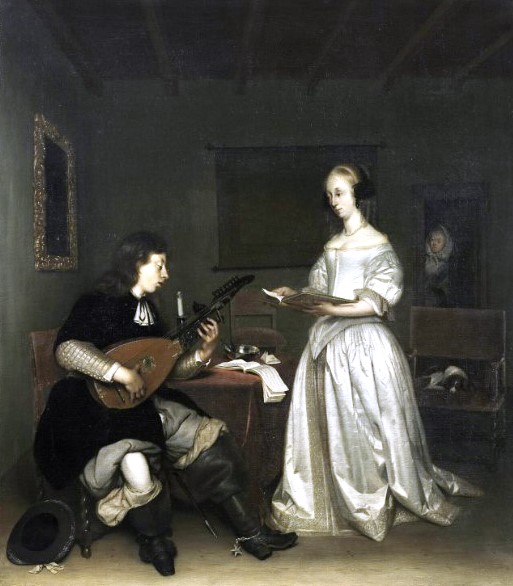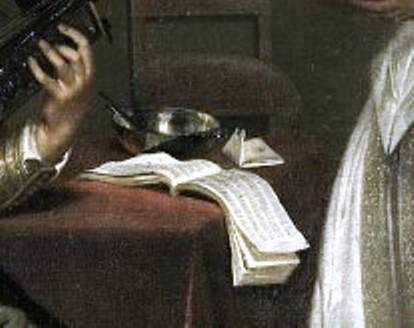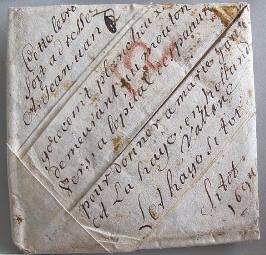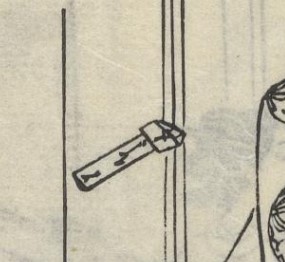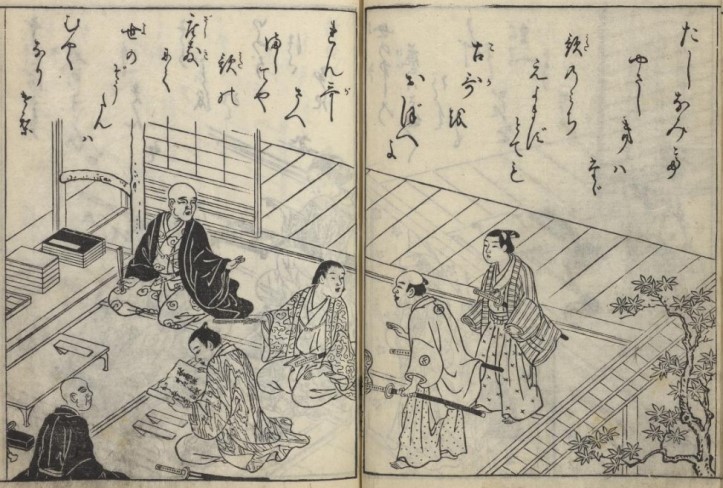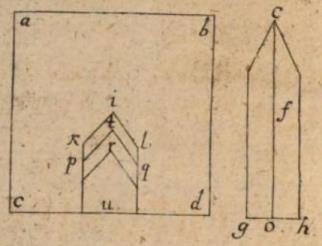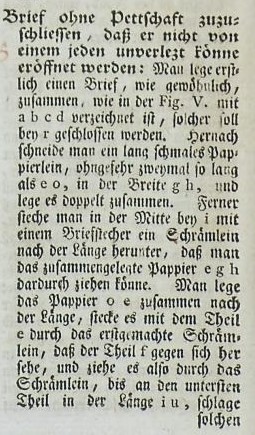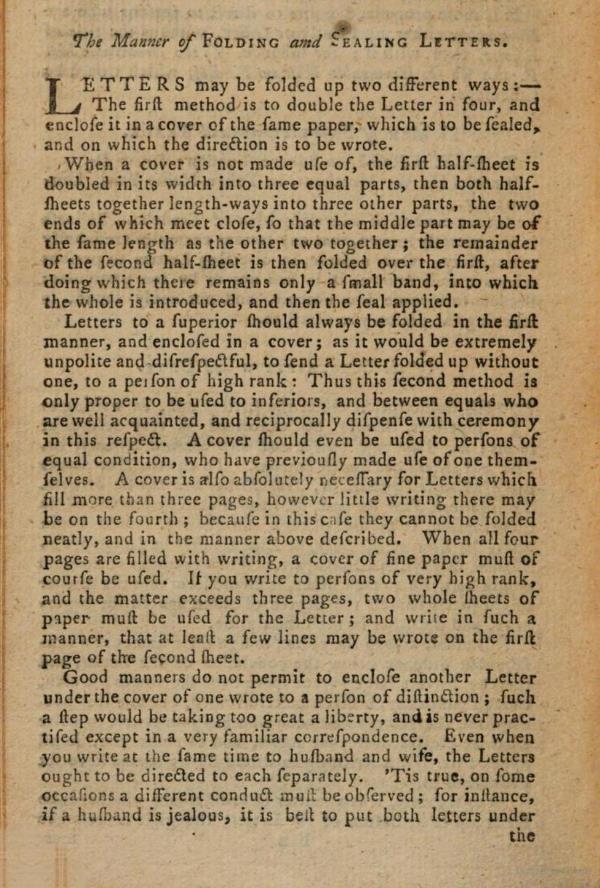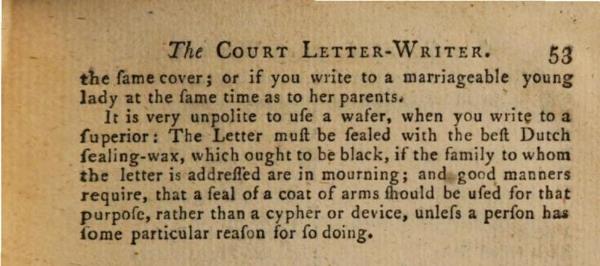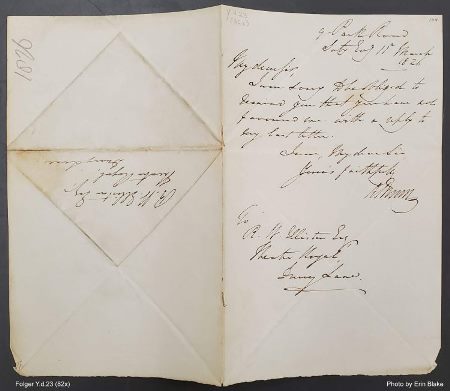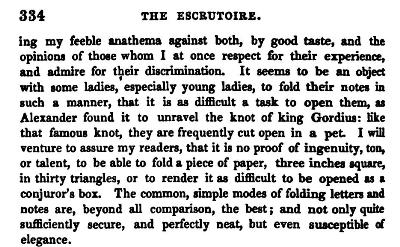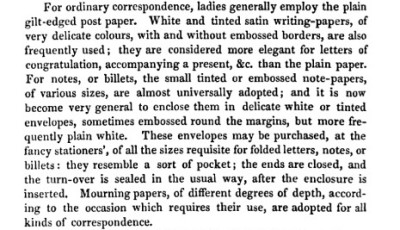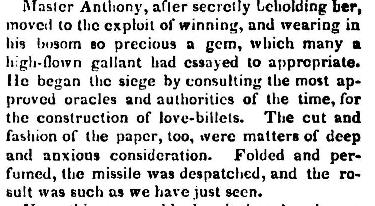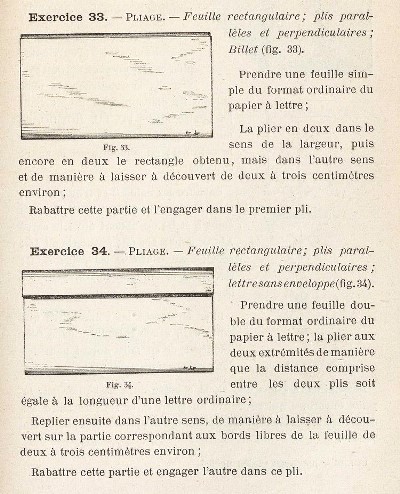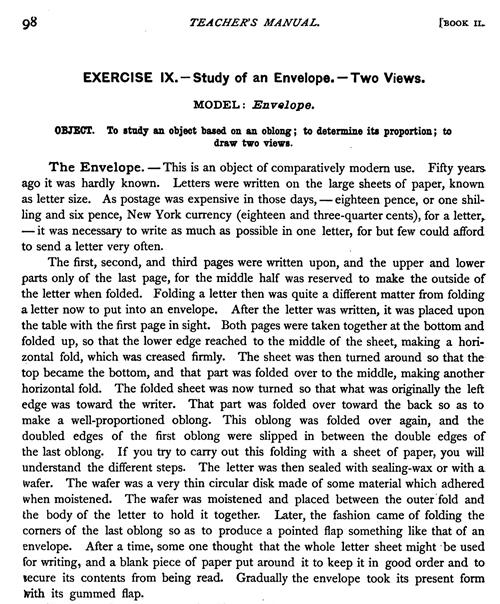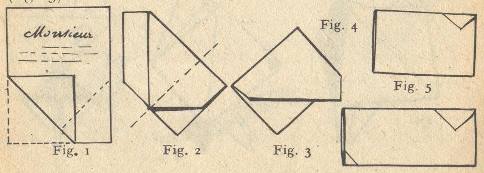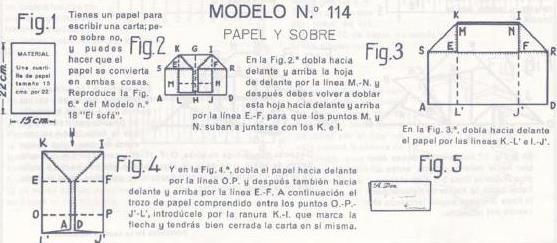| The Public Paperfolding History Project
Last updated9/10/9/2024 x |
|||||||
| Letterfolds, Notes, Covers and Envelopes | |||||||
| This
page is being used to collect information about the
history of Letterfolds, Covers and Envelopes (although,
at present, it is very much a work in progress). Please
contact me if you know any of this information is
incorrect or if you have any other information that
should be added. Thank you. This page collects information about the history of Letterfolds and Envelopes in Europe and the Americas. There is a separate page about Japanese Folded Letters. Letterfolds are ways of folding letters so that they can be posted without the necessity for envelopes. Letterlocks are additional folds, often depending on cuts, which are used to lock the letterfold together in an attempt to make sure it cannot be read in transit. Historically the most usual way of folding a letter seems to have been to fold in both long edges, although not necessarily to the point where they would meet, to form a long, narrow rectangle, to fold one short edge of this rectangle inwards to create a pocket, then to fold the other short end inwards and tuck it inside the pocket to form a stable package. A wax seal or a wafer can then be used to ensure the package will not come apart. I call this the basic rectangular letterfold. There is a separate page about Billet-Doux and another about Triangular Notes, both of which are informal folded notes often used for love letters etc. There is also a separate page about Cut and Fold Envelopes. ********** 312-13 A group of five almost complete letters written in the Sogdian language, each of which had been folded several times and bore the names of the sender and addressee on the outside, were found in 1907 by Sir Aurel Stein in Iran in a ruined watchtower on the Chinese frontier wall which formerly guarded the route between Tun-huang and Lou-lan. These documents are usually known as the Ancient Letters. They were once dated to within a few decades of the traditional date for the invention of paper in 105 A.D. and thus thought to be possibly the oldest paper documents in existence. Further consideration by scholars suggests that they are more correctly dated to the years 312-13. Source: http://www.iranicaonline.org/articles/ancient-letters ********** 1502 The manuscript 'De Viribus Quantitatis' by Luca Pacioli which was written in or around 1502 gives a description of three ways to seal a letter without any wax. a, 'Given a rectangular sheet of paper, one is to fold it widthwise so to obtain a strip of paper. Both ends of the paper are bent in such a way to obtain a similar trapeze standing out to each side of the strip. The side of the trapeze gives the next fold, which is to be folded over until both ends are close enough that after folding them into each other they form a square shape.' This sounds similar to the Love Knot Letterfold but with the ends tucked in to form a square. b, 'The second method is by far simpler. Start with a square paper. Fold it diagonally. Next, tuck one of the acute angled tips of the triangle formed into the fold of the other. The right angled tip is then tucked between them and possibly even secured by a single stitch where all of the tips overlap.' c, 'Another method is to have the letter wrapped around a round piece of leather. It is closed. The way it is closed is not to clear. However, Pacioli, stresses that there are special tongues with rounded tips to crease the letter shut. Upon opening the crease marks will be obvious making it a hard task to restore the letter to shut state.' It seems to me that the third method is a good description of the Chickenwire Letterfold. ********** 1526 Two examples of letters folded using the basic rectangular letterfold method can be seen in an engraving of Erasmus of Rotterdam by Albrecht Durer dated 1526.
********** 1525 - 1550 This portrait of Melchior von Brauweiler (1514–1569) by Giovanni Calcar (1499 - 1546) shows him holding an opened, but still folded letter, which had been sealed with some kind of ties.
********** 1575 An unfolded letter appears in this painting 'Portrait of an Elderly Gentleman in a Fur trimmed Coat' by Prospero Fontana which is said to date from c1575 to c1579.
********** 1579 This painting attributed to Bartolomeo Passerotti (1529 to 1592), and dated 1579, shows an unknown man with his servant. It is probably a portrait of ‘Domenico Giuliani’ of Naples, based on the inscription on the envelope held by the servant.The open letter shows some obvious folds but it is not clear how these relate to the folds in the closed letter in the foreground.
********** 1584 There is mention of how to open letters and reseal them without arousing suspicion in 'Magiae Naturalis' by Giambattista della Porta (1535-1615), the first four books of which were published in Latin in Naples in 1558 and which was gradually expanded to twenty books by 1584. (From Chapter XI of Book 16 - Of Invisible Writing)
********** Paper Poulets - 1596 onwards ********** 1607 In or around 1607 Sir Robert Cecil, Secretary of State for King James I/VI wrote a letter to his teenage son William which includes the following passage: 'I haue also sent yow a peece of paper fowlded as gentlemen vse to write theire letters, where yours are lyke those that come out of a grammer schoole.' This is clearly not very complementary to young William's folding skills. Unfortunately, while the letter has survived the exemplar has not. Source: https://blogs.helsinki.fi/kaislani/2016/03/11/letterlocking/ ********** 1636 'Deliciae physico mathematicae oder mathematische und philosophische Erquickstunden' by Daniel Schwenter, which was published in Nürnberg in 1636 contains a description of what appears to be a letterlock. The instructions appear to explain how to slit the folded paper and lock the halves together with a strip so no one can open it and read it, but the relationship between the text and the illustration is not very clear. Information from Edwin Corrie.
********** 1658 An English translation of 'Magiae Naturalis', under the title of 'Natural Magick', and giving the author's name as John Baptista Porta, was published in London in 1658 translates the Latin cited above as:
********** c1669 This painting by Gerard ter Borch the Elder (1617 - 1681), known as 'The Duet', includes a curiously folded, or perhaps cut, letter lying on the table.
********** The Square Letterfold - 1694 onwards
********** Japanese Knotted Letters - 1723 onwards
********** Japanese Folded Letters - 1736 onwards
********** 1759 'Onomatologia curiosa artificiosa et magica oder ganz natürliches Zauber-lexicon', which was published in 1759 explains a method of securely locking a letter:
Columns 256/7
********** 1773 The Court Letter Writer', which was published in London in 1773, contains a section explaining how letters are folded and when it is, and is not, appropriate to enclose the letter in a cover (ie an envelope).
********** Triangular Notes / Three-Cornered Notes / Cocked-Hat Notes - 1800 onwards
********** 'The New and Complete Universal Letter-Writer' by Henry Hogg and Rev George Brown was published in London in 1800. It refers to notes folded in a diamond manner and states that these should only be used for 'notes' ie informal correspondence.
********** 1819 'Leichte Künsteleien zum Vergnügen und zum Nutzen für Kinder und Nichtkinder' by Dr Heinrich Rockstroh, which was published by Ludwig Wilhelm Wittich in Berlin in 1819, contains a section headed 'Der geficherte Zuschluss' (The secure connection) which describes how to fold a letter that is more secure, and able to be more securely sealed with wax, than a standard folded letter.
********** 1829 'The Young Lady's Book', which was published by Vizetelly, Branston and Co in London, in 1829, contains mention of letters folded into knots (possibly in the manner of the Lover's Knot?), of folding three inch square pieces of paper into 'thirty triangles' (presumably actually thirty-two), and of the use of envelopes..
********** 1833 The paragraph mentioning 'folded and perfumed' love-billets below appeared in a story called 'The Maid's Stratagem' in The Lady's book (aka Godey's Lady's Book) of March 1833.
********** 1887 Instructions for a basic letter fold appear in 'Le Travail Manuel a L'ecole Primaire' by M. Coste et J. Lapassade, which was published by Lafon, Vve Ribaut et Tonnet in Pau and A Jeande in Paris in 1887. 33 is a simpler version in which only one side of the letter is locked.
********** 1890 'Part 1 for Prang's Complete Course in Form Study and Drawing Books I and II' by John S Clark, Mary Dana Hicks and Walter S Perry, which was published by the The Prang Educational Company in Boston, New York and Chicago in 1890, contains a brief history of letterfolds and envelopes.
********** This passage also appears in 'Teacher's Manual for the Prang Course in Drawing for Graded Schools, Books 1-6', by John S Clark, Mary Dana Hicks, Walter S Perry, which was published by the Prang Educational Company in Boston, New York and Chicago in 1897. ********** 1915 'Occupational Therapy: A Manual for Nurses' by William Rush Dunton, which was published by the W B Saunders Company in Philadelphia and London in 1915, contains a description of how to fold a simple envelope (which is not self-sealing).
********** 1932 A method of folding a love letter appears in 'Winter Nights Entertainments' by R M Abraham, which was first published by Constable and Constable in London in 1932.
********** 1949 A way of folding a letter into a 'Lettre Sans Enveloppe' appears in 'Au Pays des Mains Agiles', which was published by Editions Fleurus in Paris in 1949.
********** 1951 The extended version of 'El Mundo de Papel' by Dr Nemesio Montero, which was published by G Miranda in Edicions Infancia in Valladolid in 1951, contains a design for a letterfold derived from The House titled 'Papel y Sobre' (Paper and Envelope)
********** |
|||||||
